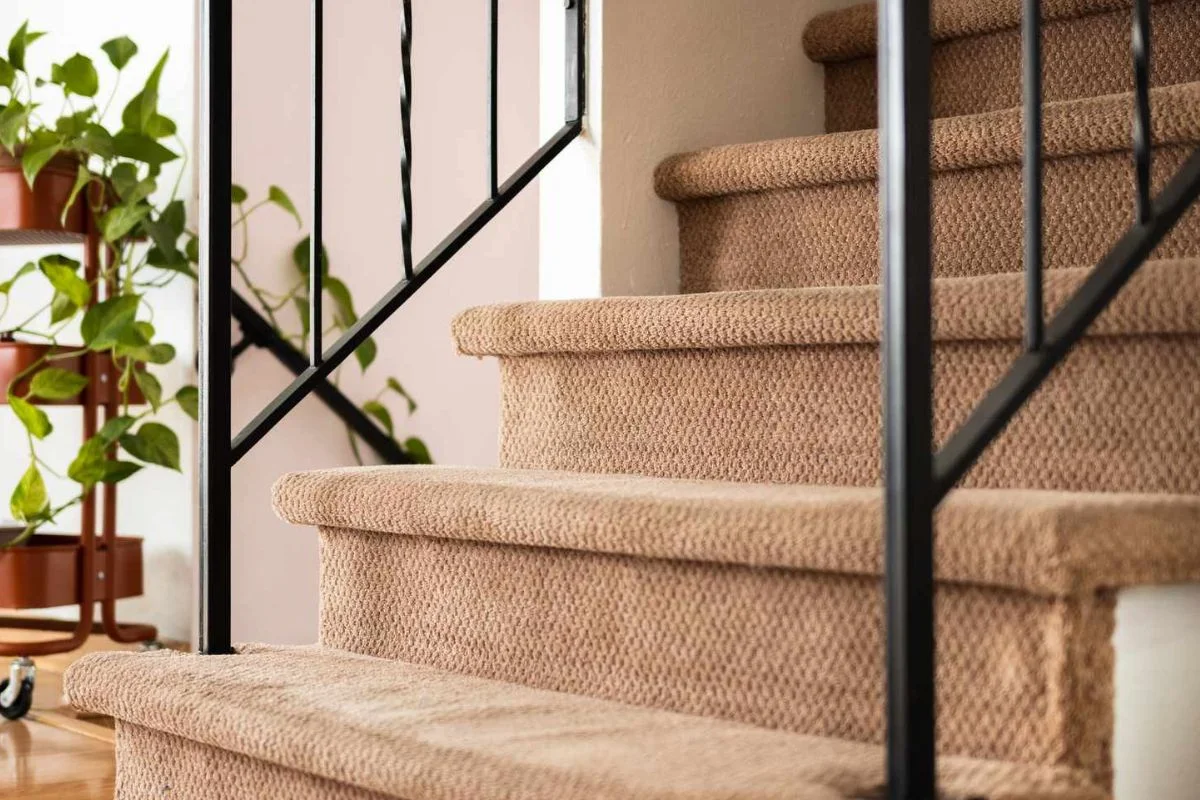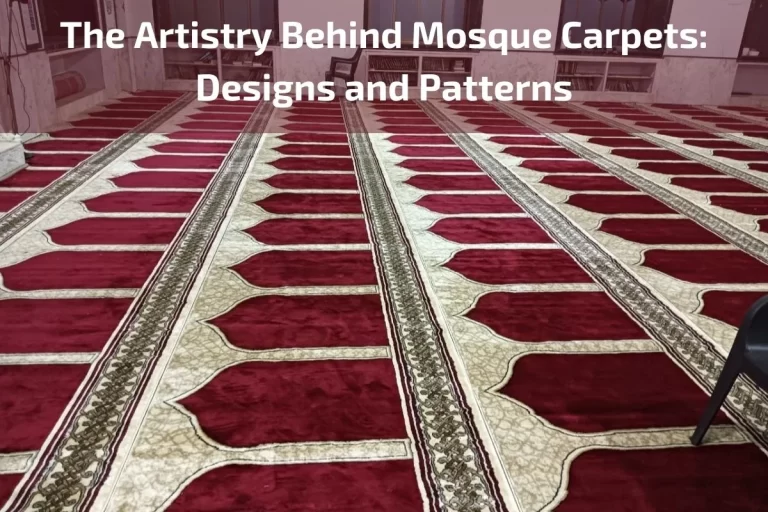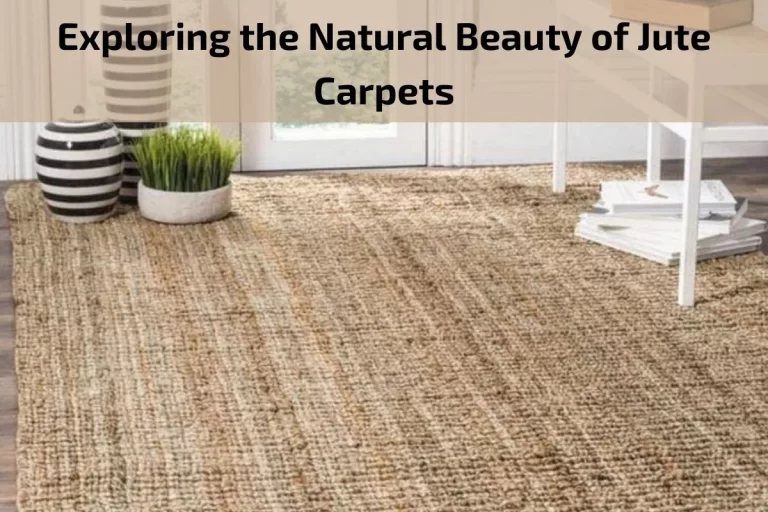In the realm of interior design, staircase carpets stand as a subtle yet significant element that enhances both the aesthetic appeal and the comfort of your home. As you ascend or descend your staircase each day, the tactile sensation of a soft, plush carpet underfoot can transform a mundane task into a delightful experience. Beyond their decorative charm, staircase carpets play a vital role in elevating the overall ambiance of your home, creating a welcoming and cozy atmosphere that invites you to linger a little longer and savor the moments of everyday life. Join us as we explore how staircase carpets contribute to the comfort and well-being of your home, from their practical benefits to their ability to infuse warmth and personality into your living space.
Brief overview of the importance of staircase carpets in interior design
Staircase carpets play a pivotal role in interior design, offering both functional and aesthetic benefits to the overall ambiance of a home. Here’s a brief overview of their importance:
Safety Enhancement: Staircase carpets provide an additional layer of safety by reducing the risk of slips and falls, particularly on hard or polished stair surfaces. The texture and traction provided by carpets help to prevent accidents and ensure safe navigation up and down the stairs, especially for children and the elderly.
Noise Reduction: Carpets on staircases help absorb sound and minimize noise levels generated by foot traffic. This is particularly advantageous in multi-level homes, where noise from staircases can reverberate throughout the house. The softening effect of carpets reduces echoes and creates a quieter, more peaceful living environment.
Aesthetic Enhancement: Staircase carpets contribute to the visual appeal of a home’s interior design. They add warmth, texture, and depth to staircases, enhancing the overall aesthetic and creating a cohesive look throughout the space. With a wide range of colors, patterns, and textures available, staircase carpets offer endless opportunities for personalization and style expression.
Comfort and Warmth: Walking on a carpeted staircase is inherently more comfortable and inviting than walking on hard, bare stairs. The soft, cushioned surface of the carpet provides a cozy feeling underfoot, making the staircase more comfortable to use, especially during colder months. Carpets also offer insulation, helping to retain warmth and prevent drafts from rising through the home.
Protection for Stairs: Carpets act as a protective barrier for stair surfaces, shielding them from scratches, scuffs, and general wear and tear. This helps preserve the integrity of the stairs and prolongs their lifespan, reducing the need for costly repairs or replacements in the long run.
The Practical Benefits of Staircase Carpets
Staircase carpets offer a multitude of practical benefits that make them a valuable addition to any home. Here’s a closer look at some of these advantages:
Enhanced Safety: Staircase carpets provide an added layer of safety by offering traction and stability underfoot. This helps reduce the risk of slips and falls, particularly on hard or polished stair surfaces. The texture of the carpet fibers helps to grip shoes and prevent accidents, especially in households with children, the elderly, or pets.
Noise Reduction: Carpets on staircases help absorb sound and minimize noise levels generated by foot traffic. This is particularly beneficial in multi-level homes, where noise from staircases can echo throughout the house. The softening effect of carpets reduces echoes and creates a quieter, more serene living environment.
Protection for Stairs: Staircase carpets act as a protective barrier for stair surfaces, shielding them from scratches, scuffs, and general wear and tear. This helps preserve the integrity of the stairs and prolongs their lifespan, reducing the need for costly repairs or replacements in the long run.
Comfort Underfoot: Walking on a carpeted staircase is inherently more comfortable and inviting than walking on hard, bare stairs. The soft, cushioned surface of the carpet provides a cozy feeling underfoot, making the staircase more comfortable to use, especially during colder months. Carpets also offer insulation, helping to retain warmth and prevent drafts from rising through the home.
Aesthetic Enhancement: Staircase carpets contribute to the visual appeal of a home’s interior design. They add warmth, texture, and depth to staircases, enhancing the overall aesthetic and creating a cohesive look throughout the space. With a wide range of colors, patterns, and textures available, staircase carpets offer endless opportunities for personalization and style expression.
Ease of Maintenance: Staircase carpets are relatively easy to maintain compared to other types of flooring. Regular vacuuming and occasional spot cleaning are usually sufficient to keep carpets looking clean and fresh. Additionally, carpets can be professionally cleaned to remove deep-seated dirt and stains.
Types of carpet materials are suitable for stairs
Several types of carpet materials are suitable for stairs, each offering unique characteristics in terms of durability, comfort, and style. Here are some common options:
Nylon: Nylon carpets are known for their durability and resilience, making them an excellent choice for high-traffic areas like stairs. They are resistant to stains and abrasions, making them easy to maintain and long-lasting.
Polyester: Polyester carpets are softer and more luxurious underfoot compared to nylon. They offer excellent stain resistance and come in a wide range of colors and textures, making them a popular choice for stairs where comfort is a priority.
Wool: Wool carpets are natural, luxurious, and durable, making them an ideal choice for stairs. Wool fibers are inherently resilient and resistant to crushing, making them suitable for heavy foot traffic areas. Wool carpets also have natural stain resistance properties and are easy to clean.
Polypropylene (Olefin): Polypropylene carpets are budget-friendly and resistant to stains, moisture, and fading, making them suitable for stairs in areas prone to spills and accidents. While not as durable as nylon or wool, polypropylene carpets offer good value for money.
Blends: Carpet blends, such as nylon-wool or nylon-polyester blends, combine the best characteristics of each fiber. These blends offer the durability of nylon with the softness and luxurious feel of wool or polyester, making them suitable for stairs where both durability and comfort are desired.
How do I choose the right carpet design for my stairs
Choosing the right carpet design for your stairs is an important decision that can significantly impact the overall aesthetic of your home. Here are some tips to help you select the perfect carpet design for your stairs:
Consider Your Overall Interior Design: Take into account the existing decor and design style of your home. Choose a carpet design that complements the color scheme, furniture, and other elements of your interior design for a cohesive look.
Evaluate the Size and Shape of Your Stairs: Consider the size, shape, and dimensions of your staircase when selecting a carpet design. For narrow or winding staircases, opt for smaller-scale patterns or solid colors to avoid overwhelming the space.
Think About Visual Impact: Determine the visual impact you want the carpet design to have on your staircase. Bold patterns and vibrant colors can make a statement and add personality to your stairs, while subtle patterns and neutral tones create a more understated and classic look.
Assess Traffic Patterns and Maintenance: Take into consideration the level of foot traffic on your stairs and the maintenance requirements of the carpet design. Darker colors and intricate patterns may help camouflage dirt and stains, while lighter colors and solid patterns may require more frequent cleaning.
Balance Pattern and Scale: Pay attention to the scale of the carpet pattern in relation to the size of your staircase. Large-scale patterns may overpower small staircases, while small-scale patterns may get lost on larger staircases. Aim for a balance that complements the proportions of your stairs.
Consider Safety and Visibility: Keep safety in mind when choosing a carpet design for your stairs. Avoid overly busy or distracting patterns that may obscure the edges of the steps and create tripping hazards. Opt for designs with clear contrast between the carpet and the stair edges for enhanced visibility.
Explore Texture and Material: Experiment with different carpet textures and materials to add depth and visual interest to your stairs. Consider textured carpets, such as loop pile or cut pile, to add dimension and tactile appeal to your staircase design.
Seek Inspiration: Browse design magazines, websites, and social media platforms for inspiration and ideas. Look for photos of staircases with carpet designs that resonate with your personal style and preferences.
Maintenance tip for stair carpets
To maintain the appearance and longevity of your stair carpets, consider the following maintenance tips:
Regular Vacuuming: Vacuum your stair carpets at least once a week to remove dust, dirt, and debris that can accumulate over time. Pay special attention to the edges and corners of each step where dirt tends to collect.
Spot Cleaning: Attend to spills and stains promptly to prevent them from setting into the carpet fibers. Blot the affected area with a clean, damp cloth or sponge, working from the outside of the stain toward the center to prevent spreading. Avoid rubbing the stain, as this can push it deeper into the carpet pile.
Use Mild Cleaning Solutions: For stubborn stains, use a mild cleaning solution specifically formulated for carpets. Avoid harsh chemicals or bleach, as they can damage the carpet fibers and cause discoloration. Test the cleaning solution on a small, inconspicuous area of the carpet first to ensure compatibility.
Professional Cleaning: Consider professional carpet cleaning for your stair carpets every 12-18 months, depending on the level of foot traffic and soiling. Professional cleaners have the expertise and equipment to deep clean and refresh your carpets, removing embedded dirt, allergens, and stains.
Protect High-Traffic Areas: Place rugs or carpet runners in high-traffic areas of your stairs to protect the carpet from excessive wear and tear. Rotate the rugs periodically to distribute the wear evenly and prevent permanent indentations in the carpet pile.
Preventative Measures: Encourage family members and guests to remove their shoes before walking on the stair carpets to minimize the transfer of dirt and debris. Consider installing carpet protectors or stair treads on the leading edges of each step to prevent premature wear and damage.
Regular Maintenance Checks: Periodically inspect your stair carpets for signs of wear, damage, or fraying along the edges. Trim any loose fibers or threads to prevent unraveling and maintain a neat appearance.
conclusion
In conclusion, proper maintenance of stair carpets is essential to preserve their appearance, longevity, and functionality in your home. By implementing regular vacuuming, spot cleaning, and professional maintenance, you can ensure that your stair carpets remain clean, fresh, and inviting for years to come.








